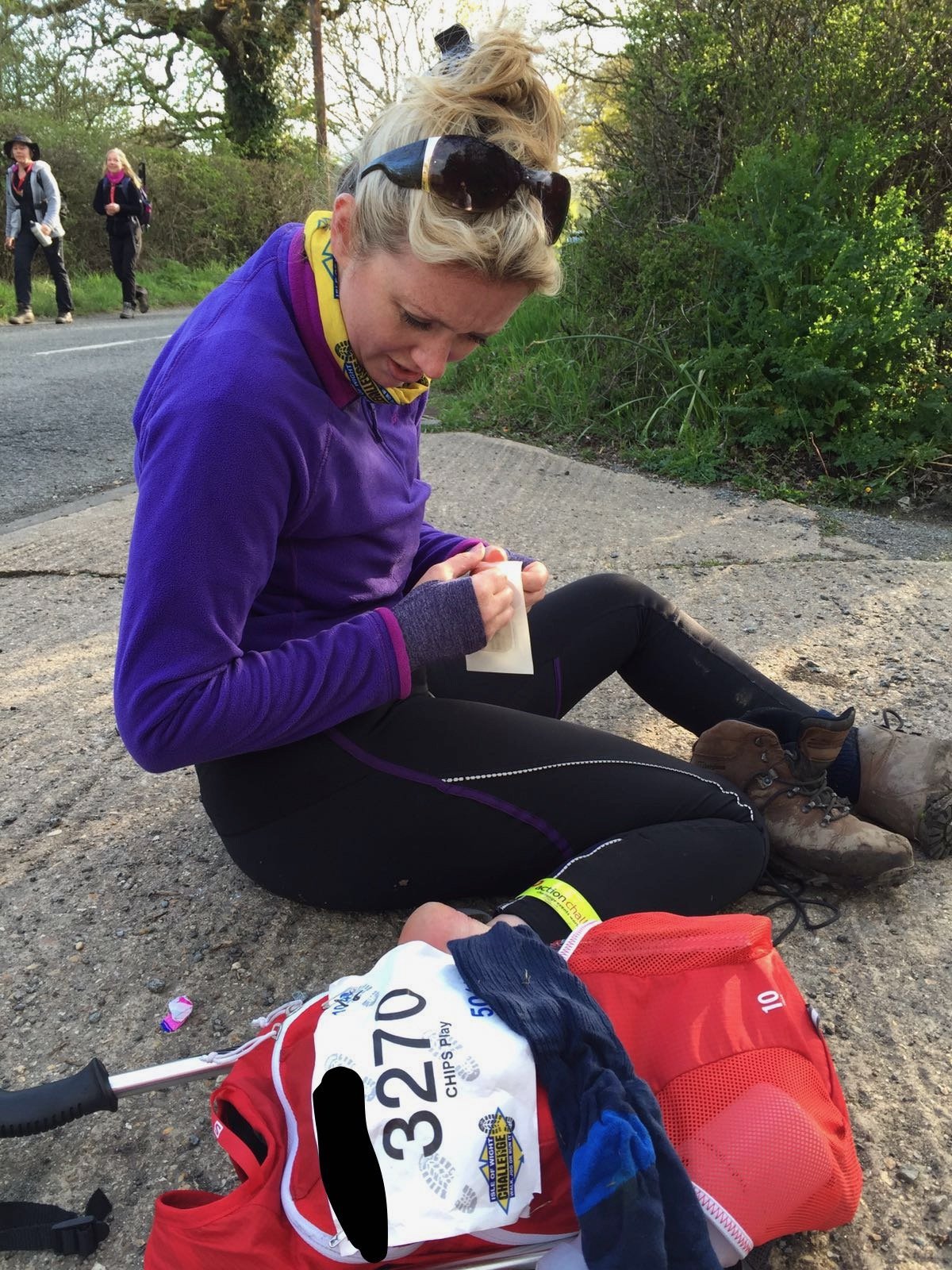““She has nothing, in short, to recommend her, but being an excellent walker.””
This month, Regency romance author Jessie Lewis – the newest ambassador for the Jane Austen Literacy Foundation – discusses Jane Austen's love of walking and its importance in her novels. Jessie also shares her inspiration behind her ambitious mission to walk 50 kilometres (31 miles) around Bath in one day to raise money for Foundation literacy projects.
Of all the activities Jane Austen’s characters pursue in her novels, walking is arguably the most common, and the most revealing. For a start, all her characters do it. Like Austen herself, a good number of them are at the lower end or even impoverished gentility, meaning that whilst they do not have to work, neither do they have money to fritter on luxuries—and, at the time, travel was most definitely a luxury.
Ladies Walking Dresses in Lady’s Magazine, July 1812
The cost of keeping horses, the carriage itself, and the wages of a coachmen and grooms was prohibitive to the large majority of families. Travel in hired vehicles or with hired horses was little better; tolls existed on many roads. For longer forays, the cost of accommodation had to be factored in, as journeys of any significant length could take several days. Even for shorter distances, carriages were not always practical, for as Mr Woodhouse points out, the coachman, “will not like to put the horses to for such a little way—and where are the poor horses to be while we are paying our visit?” (Emma, chapter 1) Overall, travel was a complex and costly undertaking. Walking, therefore, was essential.
Of course, Austen being Austen, no activity, however prosaic, ever goes underused. Walking is integral to her novels. Characters have their own manners of walking, their own reasons for walking, or their own excuses for not walking. To concentrate on just one of her novels, whole plots pivot on the perambulations in Pride and Prejudice. Mrs Bennet, for example, is, “not in the habit of walking,” and Mrs Gardiner is “not a great walker.” This is handy, because on both occasions that this is pointed out to us, Elizabeth Bennet—who is “a great walker”—is handed into the company of one tall, dark, handsome Mr Darcy, and plot developments ensue!
Elizabeth Bennet walking to Netherfield in BBC Television’s 1995 Pride and Prejudice
Caroline Bingley, for all that she teases Elizabeth about her walking, does her fair share of it in the novel. She takes a turn about the room at Netherfield to—as Mr Darcy observes—allow him to admire her figure. She steals Mr Darcy away from the others to walk with him in the gardens, again to garner his undivided attention. She claims a woman must have a “certain something in her air and manner of walking” in order to be considered accomplished. For Miss Bingley, walking is about being seen—something which, in the male-dominated world of the nineteenth century, was not easy for women, even the privileged ones.
Jane Austen is said to have enjoyed walking herself, particularly with her sister. We see this reflected in the character she famously claimed to be her favourite, Elizabeth Bennet. Elizabeth takes great pleasure in air and exercise and is described as walking, “at a quick pace, jumping over stiles and springing over puddles with impatient activity.” Her character is portrayed, through her love of walking, as lively, uninhibited, and bold. She is not afraid to walk alone, or to go long distances. It is her walking three miles to nurse her sister that alerts Darcy to her compassion—and to her attractiveness, when he sees how her eyes are “brightened by the exercise.” And let’s not forget, most importantly of all, that it’s on a walk where Elizabeth eventually becomes engaged.
Chatsworth House, taken on one of my own walks
I, too, love to walk. Unlike Elizabeth, I am not an energetic twenty-year-old, and if there is a certain something in my manner of walking, I daresay it is more likely clumsiness than the elegance to which Miss Bingley aspires. Nevertheless, I cover many miles every week, in and around Hertfordshire’s beauty spots and nature reserves, and along its numerous rivers. I’m incredibly lucky to be surrounded by a plethora of old stately homes here in the UK, and walking through the permissive pathways of their grounds certainly keeps the muse inspired. Though I do frequently come home at least six inches deep in mud, walking—after writing—is one of my favourite things to do.
Stonor Park, from another of my walks
It feels fitting, therefore, that when I considered how best to honour Jane Austen’s 250th birthday, I decided upon a walking challenge to raise money for the Jane Austen Literacy Foundation.
Jane Austen has had a huge influence on my life. It was she who inspired me to start writing. Her works and words have formed the foundation for some of my own novels, and I am a proud member of the community that has sprung up amongst her fan base. For that reason, I have been aware of the Foundation for a long time.
That the Jane Austen Literacy Foundation seeks to harness the power Austen still has today to inspire a love of literature and use it to support literacy projects around the world, is something I wholeheartedly support. Over the years, I have often thought about doing something to raise money for the Foundation, but I could never quite decide what it should be. Imagine my excitement when I found out that Action Challenge, whose walks I have participated in before, were offering a new route in and around the historic city of Bath— a city indelibly tied to Austen—and in 2025 no less, Jane Austen’s 250th birthday year! How could I not take part?
The walk is a 50-kilometre hike on 29th March, that starts and finishes at Bath racecourse and loops through the famous Royal Crescent, along the River Avon, and takes in a large sweep of the surrounding countryside. It’s a hefty distance—since we’re in a Pride and Prejudice frame of mind, about the distance from Meryton to London.
It should take about 12 hours, so it’s quite a challenge, but it wouldn’t be worth sponsoring if it weren’t, and walking is something I know I can do. This year seems the perfect time to step up (pun intended) and take part in the whirlwind of activities celebrating Jane Austen’s legacy, and I’m thrilled to be able to raise money to support the foundation in the process.
Attending to my sore feet on a previous walk!
I’ll be posting updates of my adventure on the Jane Austen Literacy Foundation Facebook page, from my training walks to the actual day. Like Elizabeth Bennet, I live in Hertfordshire, so I’ll try to capture some evocative scenery from my rambles to share with you all. The night before the event, I’m thrilled to be staying in the top floor apartment at The Paragon. It’s the house that was owned by Jane Austen’s aunt and uncle, the Leigh Perrots, and where Jane stayed with her mother when she first came to Bath. I’ll share photos of that, too. Then, on the big day, I’ll post live updates of the actual walk—or crawl, as it may be by the end! The blisters will be worth it, knowing that every step I take will be empowering someone with the gift of literacy, giving them pride in themselves and possibilities for their future. I hope you’ll follow along. I give you leave to laugh freely at my folly.
© Jessie Lewis
If you’d like to sponsor Jessie, you can do so on her JustGiving page, here.
Jessie is a serious word junkie, steadfast purveyor of silliness, and author of historical romances in the Austenesque and Regency genres. She does all her writing in her garden shed, which is nicknamed 'The Hermitage' and boasts a vintage chaise-longue, a view of the Hertfordshire countryside, and a wooden parrot.
You can find Jessie’s books and connect with her here: Amazon Author Page Bookbub Author Page Facebook Instagram Blog
Our Community in February
This month, the Jane Austen Literacy Foundation Community are reading Jane Austen’s Lost Letters, by Jane K Cleland.
Antiques appraiser Josie Prescott is unexpectedly given two letters signed by Jane Austen, with a notecard bearing her name—in her late father’s handwriting.
Josie sets off on the quest of a lifetime to discover whether the letters were indeed previously unknown letters by Jane Austen.
It’s not too late to start reading. Join the Community chat as we share the joy of reading together.
We often hear from our Community members how much they love our exclusive narrations of Jane Austen’s letters.
Enjoy an exciting narration each month of Jane Austen's letters performed by award winning narrators.
Stevie Zimmerman uses her soothing voice to read Jane's words and Harry Frost who gives us a glimpse of what it might have been like when Jane's family read her letter aloud.
If you haven’t joined us yet, now is your chance! Just click here to join. Use code AFD4F to receive 30% off your first month as a FRIEND OF THE FOUNDATION subscriber











